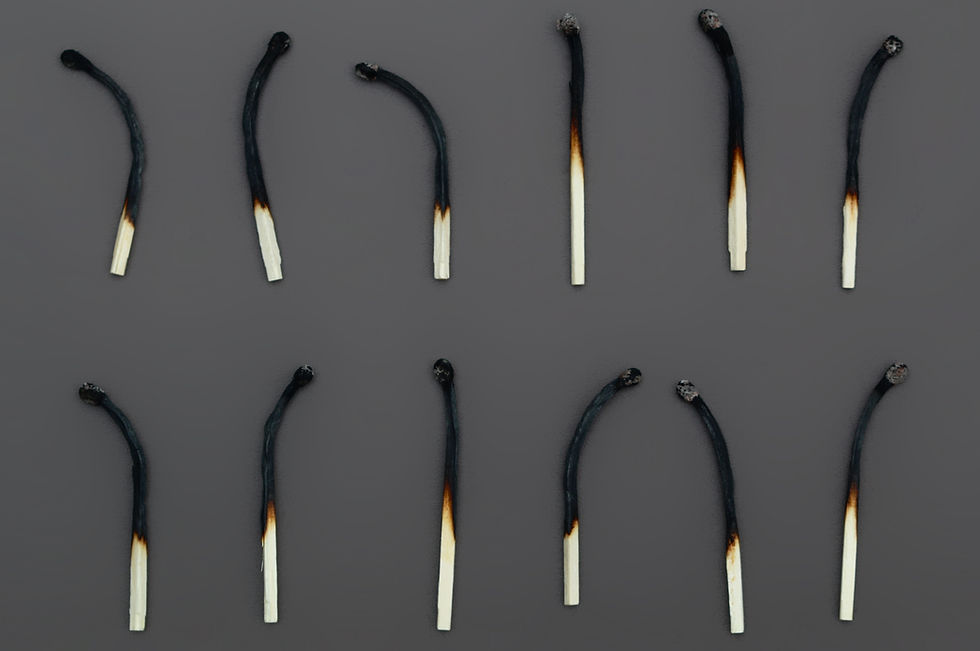Leader(ship) in a Burnout Culture
- Natalie Anguiano
- Jun 24
- 3 min read
Updated: Jul 9
WE'RE NOT OK!
Not really.
You can feel it in your team’s energy. It’s not just low, it’s hollow, deeply hollow. Like the spark left. Like a 4th of July sparkler that just refuses to light. Maybe they’re still showing up, but part of them isn’t, and if you're honest, maybe the same is true for you.

Burnout isn’t about working too many hours. It’s about carrying too much for too long without feeling seen, supported, or like any of it matters.
It’s the never-ending Teams messages. The meetings that should have been emails. The pressure to constantly innovate or pivot without time to recover. The slow bleed of emotional exhaustion that no weekend can fix.
It’s people pretending to be motivated while secretly counting the days until vacation. It's the "Sunday scaries" that ruin the end of the weekend spent dreading Mondays. It’s leaders throwing out pizza parties like confetti, when what the team really needs is honesty, direction, and space to breathe. (For more on space to breath - check out The Power of the Pause here.)
And in the middle of all that, we still have the nerve to preach “authentic leadership.”
Authentic leadership isn’t soft. It’s not just being nice or open or vulnerable. It’s being real when the moment is uncomfortable. It’s owning your role in the exhaustion. It’s standing in front of your team and saying, “I’ve been pushing too hard,” or, “I don’t have all the answers, but I won’t hide from the conversation.”
I’ve had to face this in my own world.
The pace of change around me hasn’t just picked up, it’s exploded. And I can feel it in my team. Every single one of them has quietly explored other opportunities for work.
Not because they’re uncommitted, but because the pace and pressure are relentless. I used to pretend it was just resistance to change, but now I see it more clearly: sometimes we, as leaders, move so fast and react so often, we create the very burnout we later try to fix.
We shift strategies before the team has had time to master the last one. We chase what we think the customer wants, without considering whether we’re sacrificing the stability our people need.
Here’s the part I’m learning the hard way, over and over. Speed doesn’t always serve. It confuses. It exhausts. It erodes trust.
Sometimes the boldest leadership move isn’t to go faster… it’s to pause. To articulate the strategy. To be upfront about what’s coming and why. To slow the change down just enough to give your people a chance to breathe, and maybe even thrive.
Customers don’t want chaos.They want an experience that makes them feel seen, heard, and valued. Guess what? So does your team.
So how do we build that culture?
Not with more slogans. Not with more kitschy marketing taglines. Not with more pressure.
With presence. With transparency. With enough margin to let our people win.
Being The Damaged Leader in a burnout culture means we stop pretending everything’s fine, and we start telling the truth. It means we take ownership of how we lead, not just when it works, but when it doesn’t.
And if we want to keep the heart of our teams, we’d better start there.
People are not just burned out. We are creating a burnout culture.




Comments